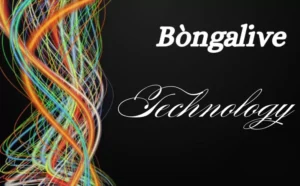Social media has become an integral part of our daily lives, transforming the way we communicate, consume information, and even shop. For bloggers, leveraging social media platforms is crucial for reaching a broader audience and driving traffic to their blogs. BodyHolistic.net, a leading blog in the wellness and holistic lifestyle niche, has mastered the art of using social posts to engage with their audience effectively. In this article, we will explore how BodyHolistic.net uses social posts to enhance its blog’s reach and provide tips for optimizing your own social media strategies.
The Role of Social Media in Blog Promotion
Understanding Social Media Channels
Social media platforms vary widely in their features and user demographics. Facebook, Twitter, Instagram, and LinkedIn each offer unique opportunities for promoting blog content. By understanding the strengths and audience of each platform, bloggers can tailor their social posts to maximize engagement and drive traffic.
How Social Media Impacts Blog Traffic
Social media acts as a bridge between your blog and potential readers. Each share, like, or comment can significantly impact your blog’s visibility. Platforms like Facebook and Twitter allow for real-time engagement, while Instagram’s visual-centric approach can captivate users and direct them to your blog.
Crafting Effective Social Posts
Identifying Your Audience
Before creating social posts, it’s essential to understand who your audience is and what they are interested in. BodyHolistic.net focuses on wellness enthusiasts and those interested in holistic living, tailoring their content to resonate with this specific group.
Creating Engaging Content
Visuals and Graphics
High-quality visuals can make a substantial difference in social media engagement. Infographics, eye-catching images, and videos are more likely to capture attention and encourage users to click through to your blog.
Text and Messaging
Crafting compelling and concise text is equally important. The message should be clear and enticing, encouraging users to learn more by visiting your blog. Using a conversational tone and personal pronouns can make your posts feel more relatable and engaging.
Call to Action
A strong call to action (CTA) directs users on what to do next. Whether it’s “Read More,” “Learn How,” or “Join the Conversation,” a well-crafted CTA can drive traffic and increase engagement with your blog content.
Optimizing Social Posts for Different Platforms
Facebook allows for longer posts and the inclusion of various multimedia elements. Utilize Facebook’s features to create comprehensive posts that can include links, images, and videos, encouraging users to interact and share.
Twitter’s character limit necessitates brevity. Craft concise, attention-grabbing tweets that include relevant hashtags and links to your blog. Engaging with trending topics can also increase visibility.
Instagram is a visual platform, so focus on high-quality images and short, impactful captions. Use Instagram Stories and Reels to share snippets of your blog content and drive users to your site.
LinkedIn is ideal for professional and industry-specific content. Share blog posts that offer valuable insights and thought leadership in your niche. Use LinkedIn’s publishing features to reach a professional audience.
Scheduling and Frequency
Best Times to Post
The timing of your posts can impact their reach and engagement. Analyze your audience’s activity patterns to determine the best times to post on each platform. Tools like Buffer or Hootsuite can help schedule posts at optimal times.
Frequency of Posts
Maintaining a consistent posting schedule helps keep your blog content in front of your audience. However, avoid overwhelming your followers with excessive posts. A balanced approach ensures your content remains relevant and engaging.
Tracking and Analyzing Performance
Metrics to Monitor
Monitor key metrics such as engagement rates, click-through rates, and shares to gauge the effectiveness of your social posts. This data can provide insights into what works and what needs improvement.
Tools for Analysis
Use tools like Google Analytics, Facebook Insights, and Twitter Analytics to track performance. These tools can offer detailed reports on user interactions and help refine your social media strategy.
Common Mistakes to Avoid
Over-Promoting
While promoting your blog is essential, over-promotion can lead to follower fatigue. Ensure your posts offer value and engage your audience in meaningful ways.
Ignoring Engagement
Engagement is a two-way street. Ignoring comments or messages can damage your relationship with your audience. Actively respond to interactions to foster a sense of community.
Case Studies
Successful Social Post Campaigns
Examining successful social post campaigns can provide valuable lessons. For instance, BodyHolistic.net’s use of visually appealing content and engaging messaging has significantly boosted their blog traffic and audience engagement.
Lessons Learned
From these case studies, we can learn the importance of understanding your audience, crafting compelling content, and continuously analyzing and refining your social media strategy.
Conclusion
Social media is a powerful tool for promoting your blog and engaging with a broader audience. By understanding the unique features of each platform, creating compelling content, and monitoring performance, you can enhance your blog’s reach and impact. BodyHolistic.net’s successful use of social posts offers valuable insights for bloggers looking to optimize their social media strategies.









